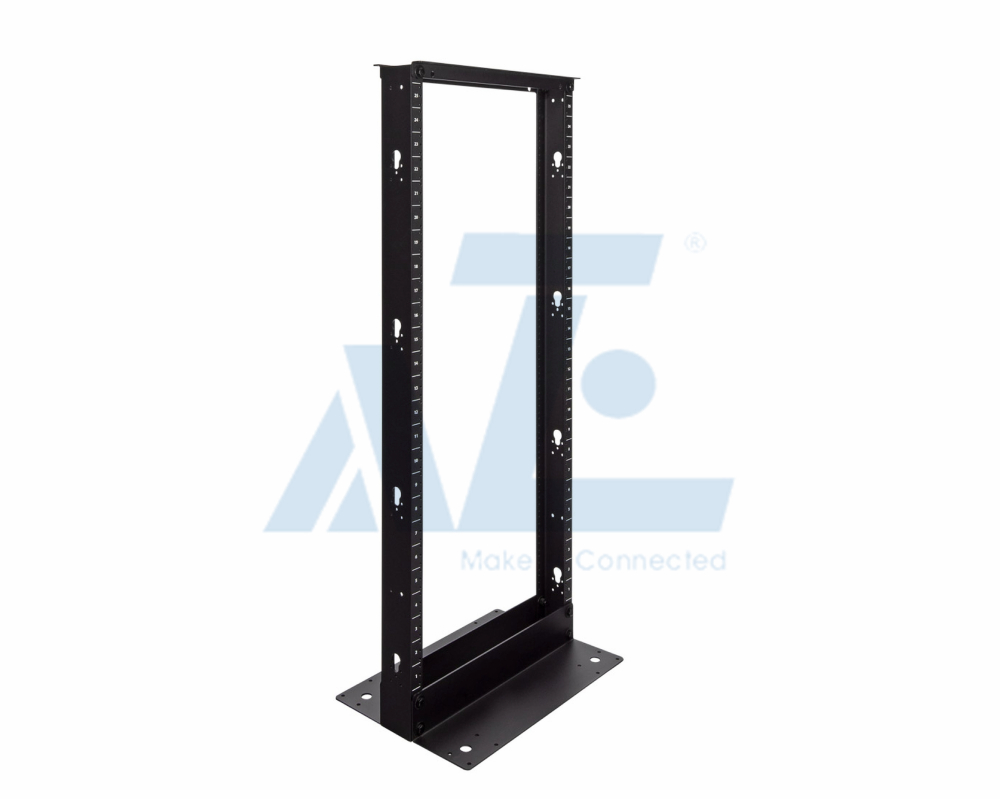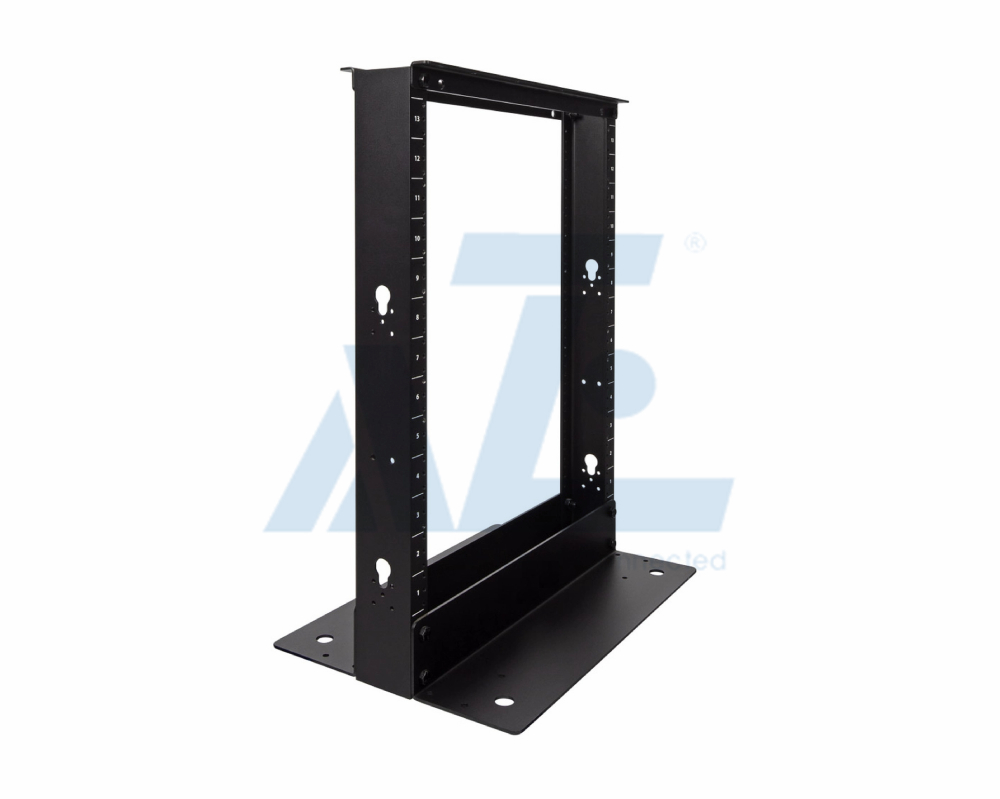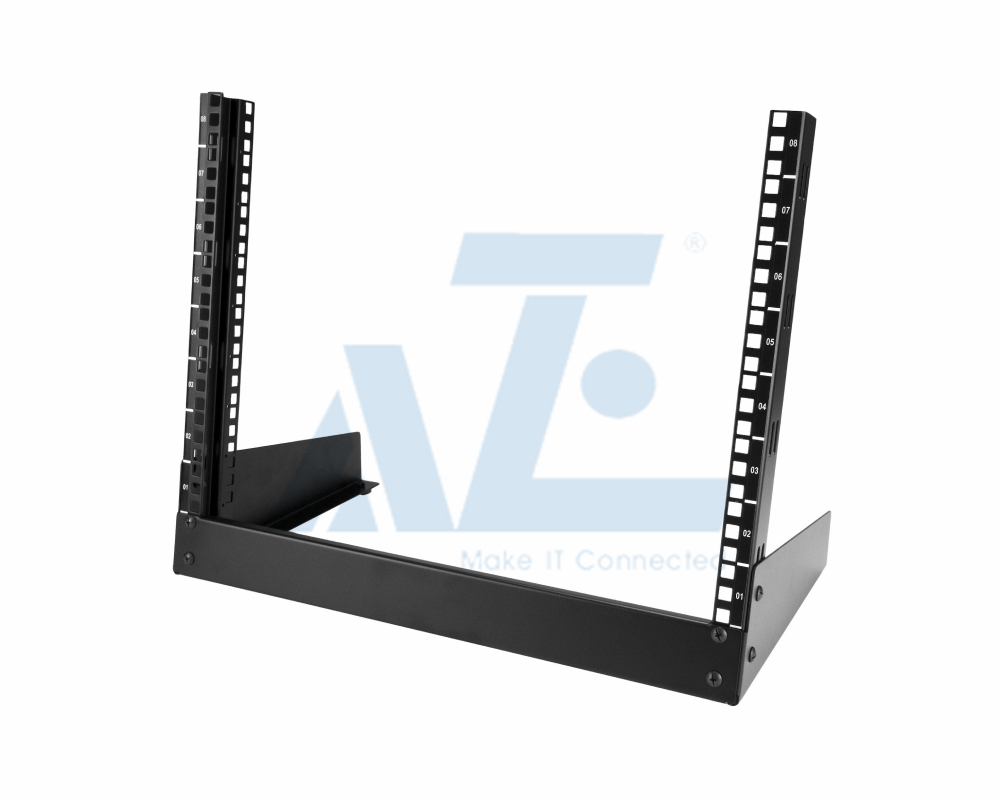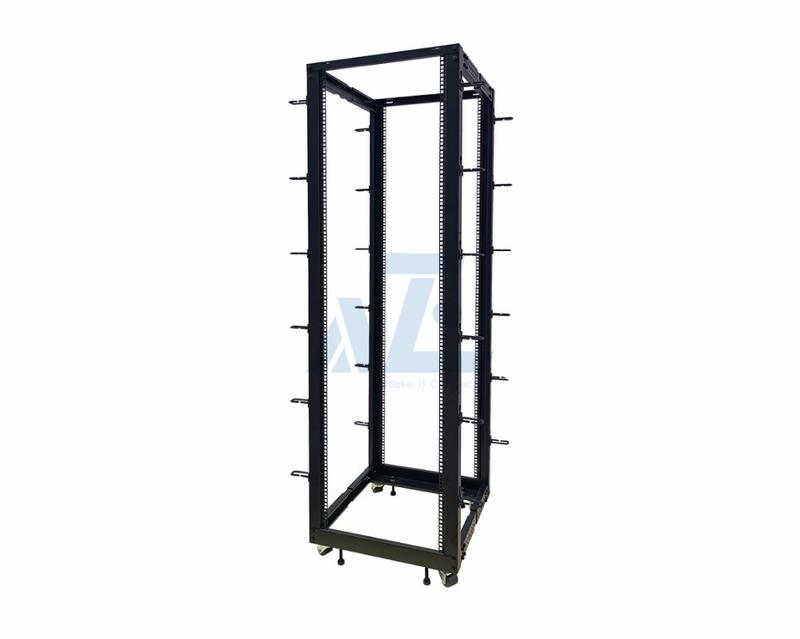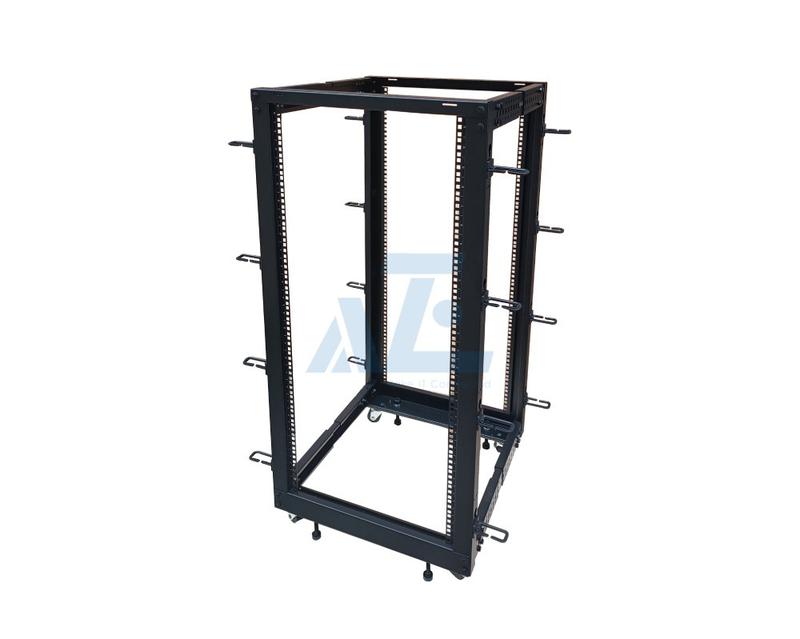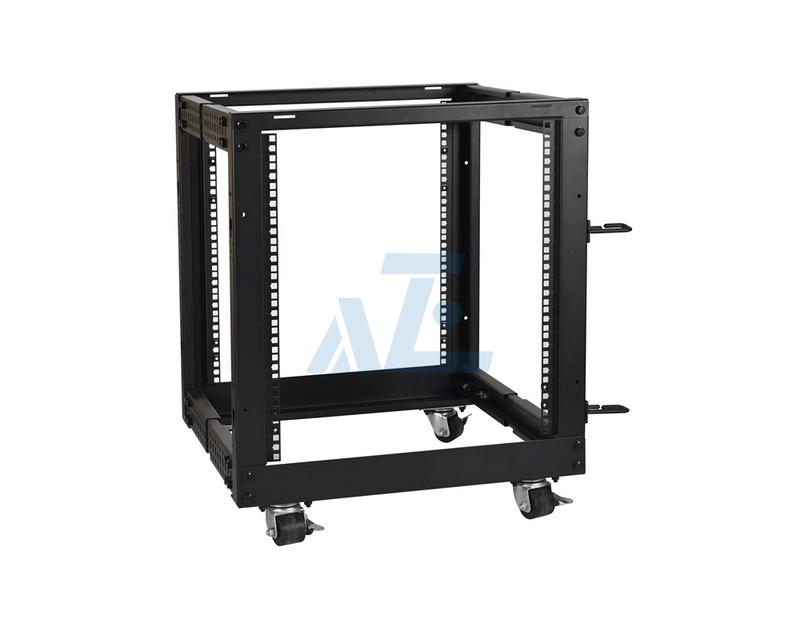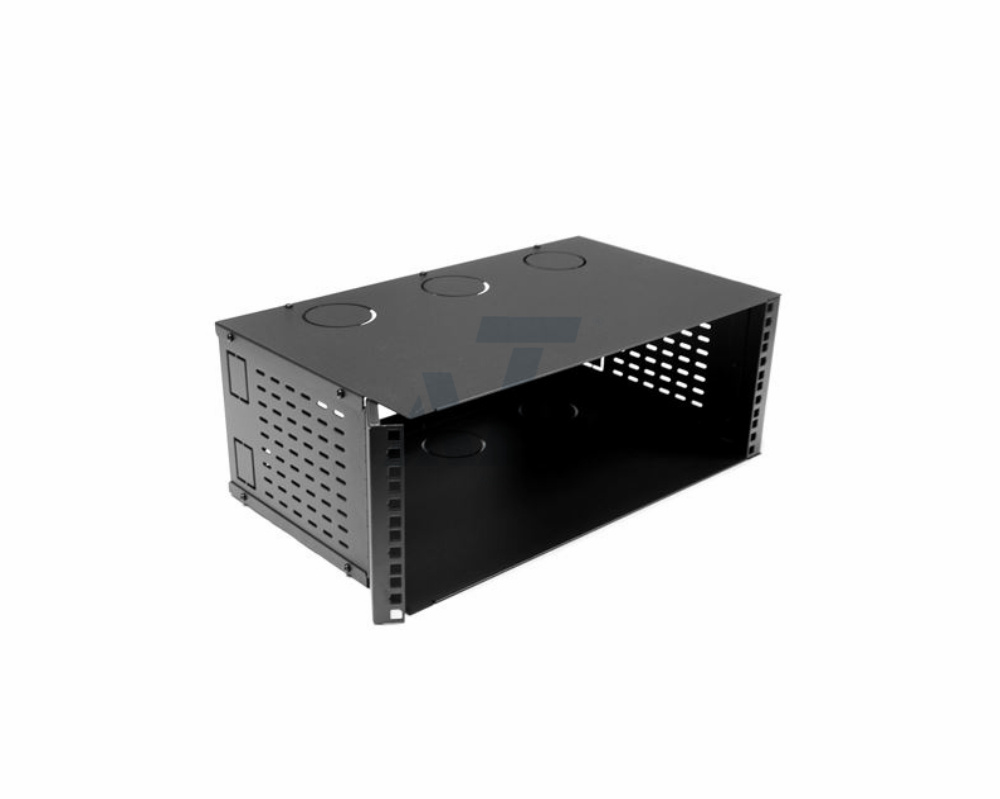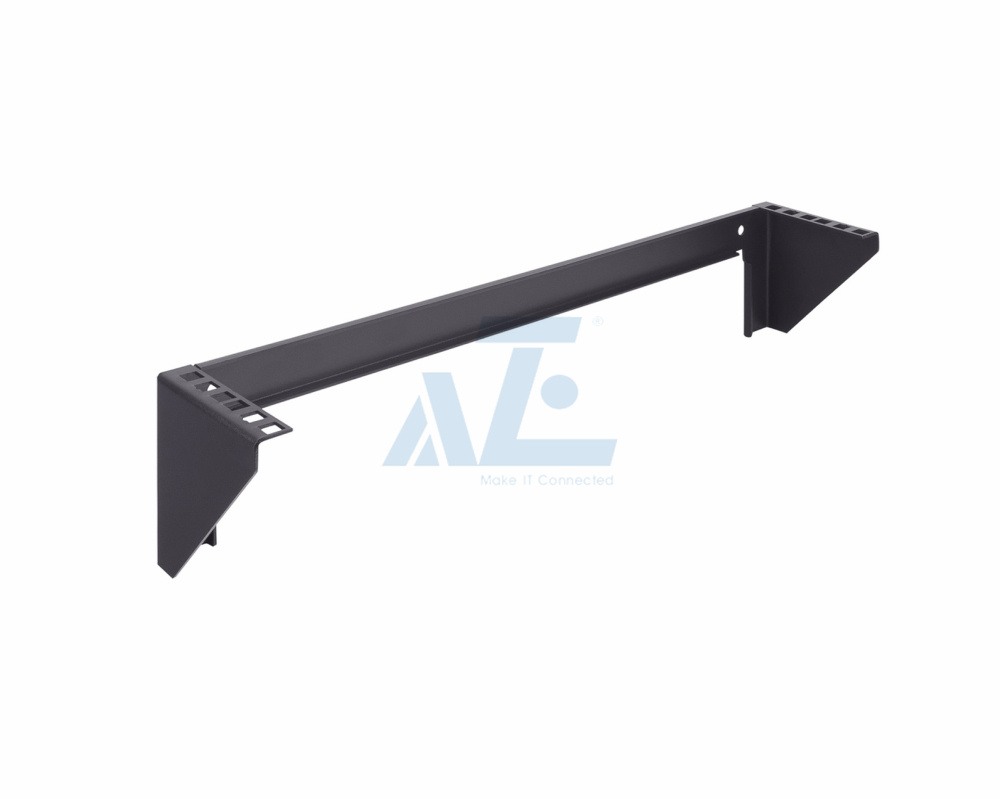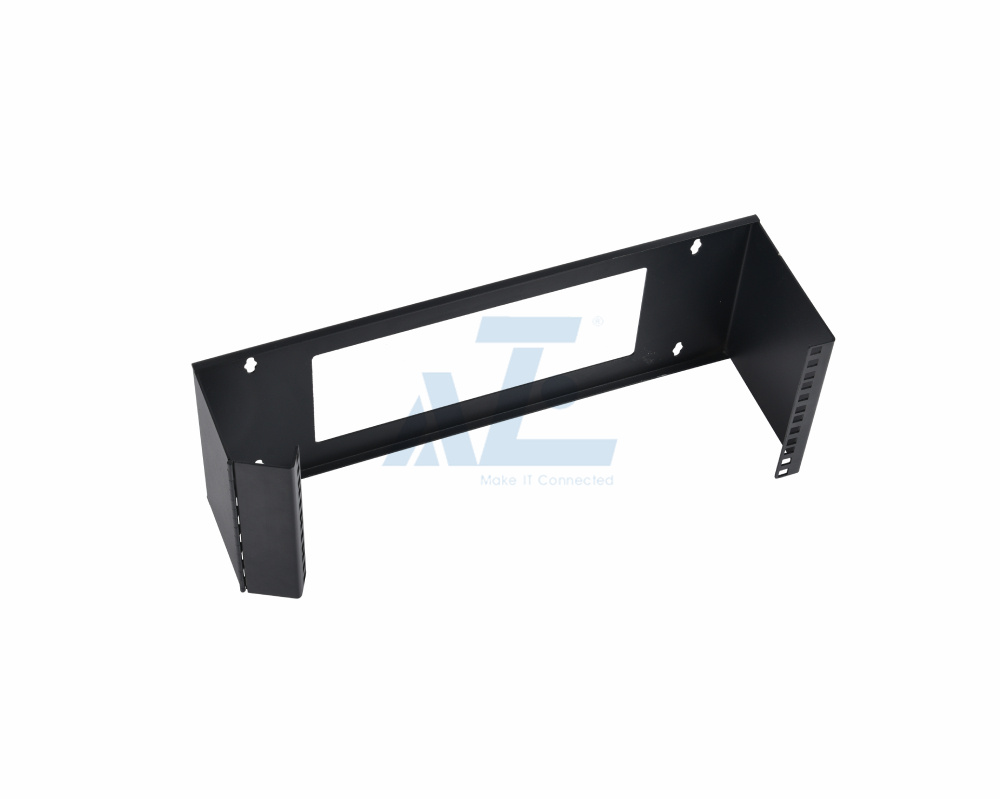An open frame rack is typically an economical alternative to an enclosure cabinet, but that doesn't mean all open racks are the same. The two main types of open racks are 2 post and 4 post, and each has its own unique uses and applications
- Available in both 2- and 4-post options
- Designed to maximize airflow and access to IT equipment
- Side rails meet EIA standards - 19" and 23" options available
- Accessory options include cable and power management
Cost-effective rack-mounting from the most trusted rack manufacturer AZE for networking switches, patch panels, and extensive amounts of cabling in network rooms and closets.
2-Post or 4-Post Open Frame Racks provide simple, low cost mounting means for rack-mount equipment in IT environments. Ideal for rack-mount servers, networking, and telecom equipment where security at the individual rack level is not required, open frame racks provide unobstructed airflow and fast, easy access to installed equipment. Provisions for vertically mounting Rack PDUs in the rear combined with options for easily routing, organizing, and storing large bundles of cables make AZE 2-Post or 4-Post Open Frame Rack solutions the best alternative on the market. Customers can choose either the open frame rack with square mounting holes for server applications (many servers today require square mounting holes), networking, and telecom applications or the open frame rack with threaded mounting holes for networking and telecom applications.
Both 4 Post and 2 Post racks have open frame options. This means that all sides of the rack are open to the environment around them. Open frame racks are less expensive than enclosed frame racks, but sacrifice security.
If you want easy access for maintenance, unobstructed airflow and aren't worried about equipment being tampered with, open frame racks are the most cost effective option available.
What accessories are available for my open frame rack?
Blanking panels are compatible with our open frame racks to help manage airflow. If you leave open space in open frame racks, hot air can drift towards the front of the servers or linger creating hot spots.
Cable management fit in our 2 post and 4 post open frame server racks. These dramatically improve organization and appearance of setups which use lots of networking cables, making it easier to find the ones you need to adjust.
Cooling Fans are available in horizontal and vertical arrangements. Both variants help direct exhaust and prohibit hot spots from developing.
Our PDU bracket allows power strips to be mounted in the keyhole slot of your open frame rack. Additionally, horizontal rackmount power strips can be mounted on the back of your rack in a similar fashion to cable management bars.
For our non-threaded, square hole racks, you will need cage nuts in order to mount shelves and rails. These are available with 10-32, 12-24 and M6 threads depending on what your specific equipment requires
What are 2 Post racks used for?
2 Post racks, also known as telco or relay racks are built to house lightweight equipment. This includes routers, switches, controllers or very thin servers. Additionally, 2 post racks are great for mounting shelves that support non rackable equipment.
You can also mount servers on 2 post racks as long as the cumulative weight falls within capacity. We offer plenty of adapters and hybrid rails to help mount servers in 2 post racks.
What are 4 Post racks used for?
4 Post racks are the standard for full servers. They can support thousands of pounds, reach 55U in height and fit any kind of IT equipment that needs to be mounted.
If you need extra security, expandability or a high weight capacity, open or enclosed 4 post racks are the best option. You can purchase them in sizes small enough to fit in an office and large enough to satisfy a data center.
What are the benefits of enclosed frame racks?
Server Racks that are protected from all four corners are called “enclosed frames.” These are available with locks one or two locks on the front, back or both.
Because of the extra metal, enclosed frame racks are a bit more expensive and allow less airflow. The walls allow for more cable management, fans and sensor accessories to be mounted.
Open frame server racks are an effective solution for many types of equipment mounting. They're as great in the data center as they are in your back IT closet. These racks allow easy access for maintenance, they come in a variety of shapes and sizes and have many 2 post and 4 post options.
What are Open Frame Server Racks?
Open frame server racks are a very popular option that can be found in many different environments. They can come in a wide range of different sizes so that they can house almost any type of equipment. These racks are installed in one location and are generally bolted to the floor in order to provide greater stability. The four metal posts provide the structure of the rack, and then shelves and other items can be installed within to support servers, routers, switches, and other items.
Advantages of Open Frame Server Racks
The following are some of the most significant advantages of this option:
-
Larger Options – While open frame server racks can come in small sizes, they are best known for larger setups. These racks normally range from 13U – 52u in height, which allows you to house almost any type of equipment.
-
Easy Airflow on All Sides – Since this type of rack is typically mounted in an open floor area (of a data center), the airflow is easy to manage. Equipment fans can be installed to direct warm air out of the area, or additional air-cooling options can be used to maintain a precise temperature.
-
Versatile Placement – As long as you choose the right size rack, you can install it in almost any location. They get secured to the floor, and to each other if installed in rows, to keep them stable.
Disadvantages of Open Frame Server Racks
While this rack style is very popular, there are some drawbacks to be aware of, including the following:
-
Reduced Security – Since the rack is open on each side, it isn't as physically secure as you might like. These are usually placed in data centers and other secure facilities, however, so this may not be a big issue.
-
Bolted to the Floor – In order to keep these racks stable, they should be fastened to the floor. Depending on the location where they will be installed, this may be a challenge.
What are Wall Mount Racks?
As the name implies, wall-mounted racks are any rack solution that is physically mounted to a wall rather than resting on the ground. They come in a variety of shapes and sizes but typically aren't as large as open frame server racks. Many people love the wall-mounted option because it can keep computer equipment up and completely out of the way, freeing up valuable floor space for something else.
Advantages of Wall Mount Racks
The following are some of the different reasons why people choose wall-mounted racks for their computers and network equipment:
-
Physical Security – When mounting your equipment where it may get stolen or vandalized, it is important to keep it secure. Wall-mounted racks can completely enclose the equipment and have it bolted securely to the wall.
-
Floor Space – Mounting equipment on walls is a great way to keep it up and out of the way. This allows other items to be placed on the floor. At the very least, it clears a path for people to walk or work.
-
Location Near Use – Placing computer equipment near a mounted television is a very popular option for businesses that want to use the television for displaying ads or other information. Securing the computer near this monitor will make it easy to customize the visuals.
Disadvantages of Wall Mount Racks
While this option is ideal for many situations, there are times when a wall-mounted rack just isn’t a good idea:
-
Small in Size – These racks are designed to be secured directly to a wall, which means there are going to be certain size and weight restrictions to consider.
-
Specific Location – Placing the racks in the center of the room, or in some other area as needed, isn’t practical. This design is really only made to get mounted on the walls.
Deciding which of these two options is right for you doesn't have to be a major challenge. In most cases, an open frame server rack is going to provide benefits that can't be matched by a wall-mounted design. This is why they are by far a more popular choice among data centers and other businesses. When you have a specific situation that demands a wall-mounted option, the decision to go that route is also quite simple. Once you know what type of things the racks will be used for, it should be no problem to choose the design that will work for you.

